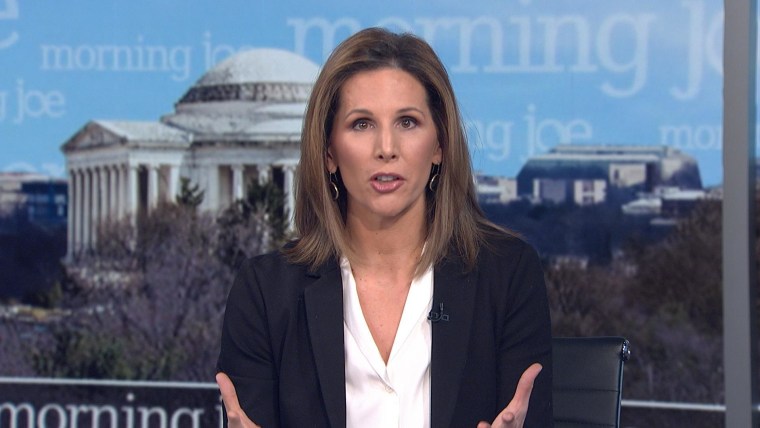Peepers Skinny Mini Reading Glasses for Women in Different Colors
When Dr. Isabel Geathers was offered a leadership opportunity at an organisation several years agone, she called a one-time colleague who had some insight into the company. The colleague laid it out straight. "She told me that the leadership was just stepping in it. There were interactions (betwixt leadership and staff) that were super intense and problematic. I had folks say to me, 'We know you're smart, we know why you were hired, but you need to prove yourself.' And that was that moment when I thought, 'Oh my god, I was brought in to clean upward this mess.'"
For more similar this, follow TMRW on Instagram at @tmrwxtoday.
The phenomenon that Geathers experienced is known as the "drinking glass cliff," where women and/or people of color are moved into leadership positions when times are tough or the system is in crisis.
The term was first coined in 2005 past Michelle Ryan and S. Alexander Haslam in an article they wrote for the British Periodical of Management. It builds on the idea of the "drinking glass ceiling," which refers to barriers that women typically confront in ascending to positions of power. By contrast, when women reach the glass cliff, they've achieved the leadership position, only are now in potentially treacherous situations that could lead to failure. As Ryan and Haslam explain, "Women are especially likely to exist placed in positions of leadership in circumstances of full general financial downturn and downturn in company operation. In this way, such women tin be seen to be placed on top of a 'glass cliff' in the sense that their leadership appointments are made in problematic organizational circumstances and hence are more precarious."
A similar 2013 study from 2 researchers at Utah State University establish that the glass cliff phenomenon was also prevalent for people of color moving into leadership positions. Alison Cook and Christy Drinking glass write: "Minority leaders confront challenges that begin at the point of promotion and become beyond underrepresentation ... they are more likely to exist appointed to struggling firms, creating greater obstacles to successful leadership than their white male peers."
Minority leaders "are more likely to be appointed to struggling firms, creating greater obstacles to successful leadership than their white male person peers."
Alison Melt and Christy Drinking glass, Utah Land Academy
Geathers recognizes this feeling all too well. "You know what'southward fascinating about the glass cliff? Waiting for a company or an organization to be in a full-on crisis and and then waiting to achieve out to women to fix it. It's always a recognizable crunch — and dare I say, a crisis that's beyond fixing — before women get the acknowledgement or the actual promotion. And and so that'due south twofold when you're a person of colour. As a Black woman, I meet this all the time," she said.
The glass cliff miracle presents a problem to the sustainability of an organisation. When the going gets crude, a board might be more probable to make a leadership nomination that'due south seen every bit risky or radical. Translated: They're more than likely to take a risk on someone who isn't a white human being. Just without the infrastructure to support the leadership transition through catchy times, the leader becomes "tokenized." They're only a figurehead; and this, in essence, dooms them to fail. And it'south reflected in the leadership disparities at the meridian of the peak. In 2019, there was an increase in female CEOs in Fortune 500 companies — 33 women CEOs out of 500, upward from 24 in 2018. And in June 2020, Fortune reported simply five Black CEOs — a scant i%.

Equally a veteran of nonprofits, Erica Rife has witnessed firsthand how individuals tin be promoted to leadership roles without any kind of built-in support. "The nonprofit world will continue to struggle and get called out for inequitable behavior because there's then much piece of work, there's no budget and in that location'southward always a question of resources, allow alone this problematic, racialized and gendered environment," Rife said. She went on to describe several circumstances in her professional career where she watched women and/or people of color exist promoted without any kind of training, support or professional development. "There was all the work to keep up the appearance of beingness an inclusive and diverse environment, and none of the infrastructure," said Rife.
Geathers echoes this sentiment: "I have issues when people of colour or women are put into leadership positions and information technology'south purely ornamental. If yous're a adult female/POC and you're promoted and y'all're working upwardly through the ranks of an system, yous actually need support at all levels. This presupposes that your employees have been trained, they've had admission, they've had the opportunity to engage deeply and meaningful with women or POCs in the organization, so when people stride into these roles, they're able to do their jobs. But that rarely happens."
If female and/or POC leaders fail in righting the ship, they simply leave, which tin can be even more disruptive for the professional person success of both the individual and the system. In November 2019, Melisa Miller stepped down as the CEO of Alliance Data Systems, a Fortune 500 company, after a mere five months on the job. She had been promoted to the position in the middle of a company-wide relocation from Plano, Texas, to Ohio. Amid much speculation around her abrupt departure, at that place was the implication that Alliance Data Systems stock had not grown in the means that were anticipated during her very brief leadership. Miller had been with Alliance Data since 2006 and was notably one of merely 7% of female person CEOs at Fortune 500 companies at the fourth dimension.
And when the CEO is a adult female and a POC, the odds of a long tenure are even more limited. Mary Winston, the interim CEO of Bed Bath and Across (who identifies as a Blackness woman) was replaced past a permanent CEO (a white human being) in 2019, leaving nil Black or Latinx women in a CEO position at a Fortune 500 Company right now.
Fifty-fifty if they are successful in spite of the obstacles presented by the glass cliff, women and/or POCs face another bind.
"It does feel like when nosotros're promoted into these positions, you lot're being promoted equally insurance," Geathers said. "Because then you're in the really difficult position if you do well in the role. Because you take to deal with the emotional price of people beingness surprised that you're competent and good at your chore. But the problem is that yous're also penalized for beingness better than your predecessor or even knowing more than your bosses."
Organizations take to shift their mindset from thinking that the promotion of women and/or POCs as a "risky endeavor." Instead, they should focus on building the infrastructure to support a seamless leadership transition, as well as the long-term tenure of female/POC leaders. Ryan and Haslam stressed that the first step is recognizing and naming the glass cliff so that these invisible factors are more recognizable. "Ironically, besides, information technology is credible that, if overlooked, these factors can hands promote the very inequality that women'due south advancement is intended to redress."
Or, as Geathers summarized, "If you lot do fail, you play into all the stereotypes most women in leadership, Black women ... you become the perennial diversity rent."

Source: https://www.today.com/tmrw/glass-cliff-why-women-people-color-are-often-set-fail-t189060
0 Response to "Peepers Skinny Mini Reading Glasses for Women in Different Colors"
إرسال تعليق